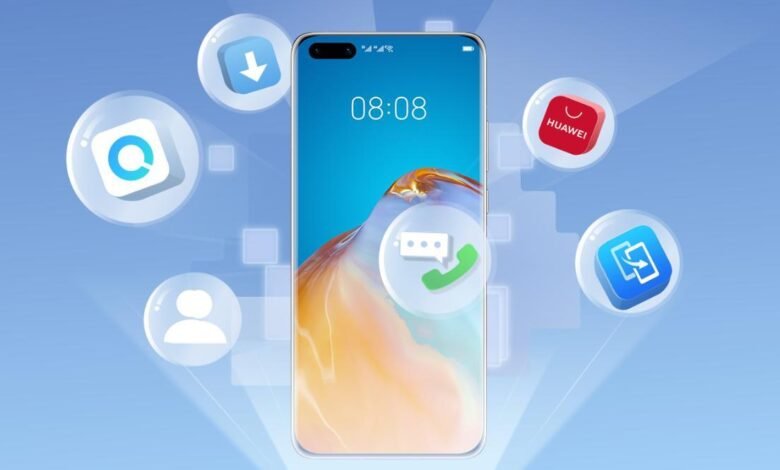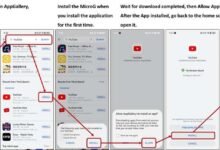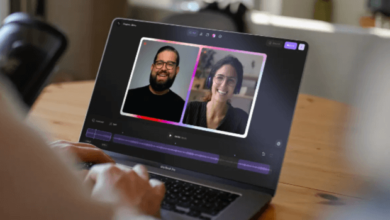Can You Use Classroom on Huawei with HMS Only?

Huawei users often encounter challenges when trying to use Google Classroom on their HMS-powered devices. Without the traditional Google Mobile Services (GMS), accessing applications like Google Classroom becomes trickier. However, with a rise in educational needs, finding effective ways to run classroom environments on Huawei devices is crucial. If you’re wondering how to use Google Classroom on huawei without GMS, this guide explores the methods and challenges associated with using Google Classroom with only Huawei Mobile Services (HMS). By understanding these processes and their limitations, Huawei users can navigate their educational requirements more efficiently and continue to leverage Google Classroom’s functionalities.
What Is HMS and Why Has It Replaced GMS on Huawei Devices?
HMS stands for Huawei Mobile Services, a suite of applications and services developed by Huawei for its devices. It serves similar purposes as Google’s GMS, offering services like cloud storage, location, account authentication, and more. The migration from GMS to HMS has resulted in Huawei devices being unable to take full advantage of Google’s services. As a result, Huawei developed HMS to ensure that its devices remain fully functional without dependency on GMS. This transition means that Huawei users have to adapt to new applications and settings, offering a unique yet challenging experience for those reliant on Google’s ecosystem. Despite these changes, Huawei remains committed to providing robust alternatives.
Workarounds to Access Google Classroom on Huawei HMS Devices
Use the Web Version via Browser
One straightforward method to access Google Classroom on Huawei devices is through the web version. Start by opening your device’s browser and navigating to the Google Classroom site. Log in using your credentials, and you should have access to all the essential features available. While this approach doesn’t require any additional software, it is dependent on stable internet connectivity for smooth operation. Most of the core functionalities, such as accessing assignments and leaving comments, remain accessible. However, some features may not work as seamlessly as they do in a dedicated app environment. For the most reliable experience, ensure your browser is up to date and regularly cleared of cache.
Sideloading Google Classroom APKs
Another method involves sideloading the Google Classroom APK file. Users can download the APK from reputable third-party sources using a browser. Once downloaded, follow your device’s installation instructions, typically found in the settings under “Security” by enabling “Allow Installation from Unknown Sources.” After installation, log in to Google Classroom as you usually would. Although sideloading allows you to use the app directly, it carries risks, such as potential security vulnerabilities or the app not receiving updates. Additionally, some features may require Google Services Framework, which won’t be available, leading to partial functionality.
Use Parallel Space or GSpace
Apps like Parallel Space or GSpace can emulate the GMS environment, allowing Google Classroom to function on Huawei devices. Download either application from Huawei’s AppGallery or other app stores. Once installed, use the app to clone and run Google Classroom in a simulated GMS environment. This workaround helps in reducing compatibility issues that arise due to the unavailability of GMS. While this method provides a more integrated experience than a browser, it consumes more battery and processing power. It also doesn’t guarantee full functionality of all Google Classroom features, often leading to incomplete or delayed updates and notifications.
Limitations and Issues You May Face
Classroom Notifications May Not Work Reliably
When using alternative methods to access Google Classroom on Huawei devices, notifications can become unreliable. This issue arises primarily from the absence of Push Notification services typically provided by GMS. Without these, students and teachers might miss critical alerts about assignments, announcements, or messages. To mitigate this, users can set manual reminders or frequently check the app/web interface for updates. Even with alternative notification apps, ensuring full functionality remains challenging, requiring users to rely on manual intervention to stay informed.
Sync Issues with Google Services
Huawei users may encounter sync issues when using Google Classroom without GMS. As Google’s services facilitate seamless synchronization across devices and apps, lacking them can disrupt the consistency and update frequency of information. Users might experience delayed uploads or updates of assignments and class materials, affecting collaborative efforts. To address this, saving work offline and ensuring stable internet connections when syncing may provide partial solutions. Manual syncing can help maintain data currency, although it adds extra steps to the workflow.
Device Compatibility and App Stability
Users leveraging workarounds for Google Classroom on Huawei devices might experience compatibility and stability issues. Frequent crashes, lagging interfaces, or incomplete functionality are common due to the reliance on non-native environments and the absence of GMS. These issues impact the user experience negatively, making regular tasks cumbersome. Using reliable apps like GSpace or the latest browser versions can somewhat reduce these challenges, but they do not remove them entirely. Users should prepare for occasional troubleshooting to maintain productivity.
Conclusion
While accessing Google Classroom on Huawei devices without GMS is feasible, it involves navigating several workarounds and potential issues. Utilizing the web version, sideloading APKs, or emulating GMS with apps like GSpace provides varying degrees of success. However, limitations such as unreliable notifications and sync issues present ongoing challenges. By understanding these and preparing for potential setbacks, users can better manage their educational activities on HMS devices. As technology evolves, these solutions may improve, offering smoother integration and enriched experiences for Huawei users relying on educational tools like Google Classroom.






